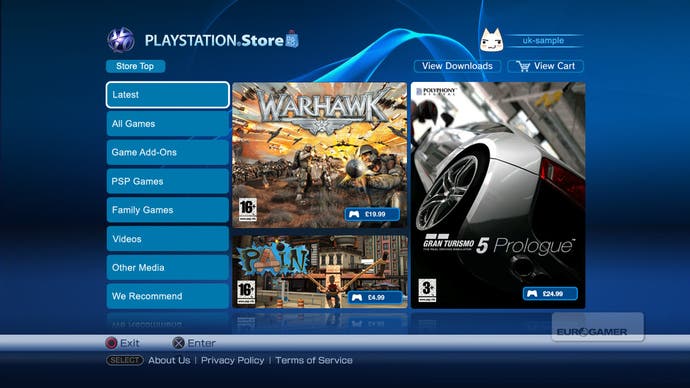System Update
How the current generation has redefined itself through firmware.
April 2008 saw the PlayStation Store get a much-needed overhaul, while July brought the long-awaited option to call up the XMB from in-game, an extension from 50 friends to 100 and the arrival of the much-vaunted Trophies, an Achievement-baiting addition slightly marred by the fact that the 2.40 update bearing them caused some console bricking and had to be withdrawn. September brought PlayTV into the PlayStation fold, nudging us ever closer to that Holy Grail of home electronics - the Box Under The Telly That Does Everything.
In the face of such openly competitive upgrades, Microsoft went nuclear and dropped the New Xbox Experience on 19th November, 2008. This was notable since it essentially rebranded and relaunched a console already in active use, completely changing the front end and making the most blatant strides yet towards courting the mainstream audience that the Wii had been effortlessly winning over without all the HD bells and whistles of its rivals.
Avatars were the most obvious new addition, integrated into a redesigned dashboard that initially felt like being smacked in the face by a bus shelter covered in adverts. Xbox Live Parties were also made possible, enabling up to eight friends to chat and stay in touch even while playing different games.
For all the cynicism, it's hard to argue that the NXE wasn't a great success. If you've seen an offline 360 that still hasn't had the update recently, it's easy to see how the navigation (ad-heavy though it may be) has been massively improved. And as if to make up for the indignity of mandatory cartoon alter-egos, practical options such as hard-drive installation for games, or the ability to remove zero-Achievement games from your profile, tickled the hardcore glands.

All of which put the pressure on PlayStation Home to deliver something similar for PS3 owners, a role the nascent social hub showed little interest in fulfilling. Often delayed, and launched in a disappointingly sparse state, Home's lack of integration with the XMB was either a blessing or a missed opportunity depending on how fond you were of synchronised dancing and clinical virtual shopping malls. Certainly, there was no incentive for PS3 owners to invest in Home to begin with, which has left the service struggling to make itself relevant or essential.
Rather typically, the Wii had spent this time studiously avoiding the fight altogether. System updates were generally behind-the-scenes in nature, or added promotional channels for upcoming games. It wasn't until March 2009 that Nintendo's all-conquering white slab unleashed its first major firmware improvement, allowing the SD card slot to be used to run games and channels, rather than simply being a glorified memory card.
Xbox Live Primetime continued the 360's move into the social arena in August 2009, pitting avatars against each other for actual prizes in the live gameshow 1 vs 100. User ratings were also activated, allowing everyone to vote absolutely everything as four stars, while Facebook, Twitter and last.fm joined the dashboard in their own section in October. In a move that surprised no one, Facebook came to the PS3 the following month.
